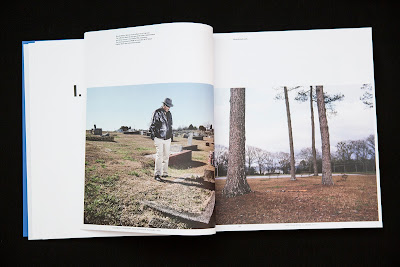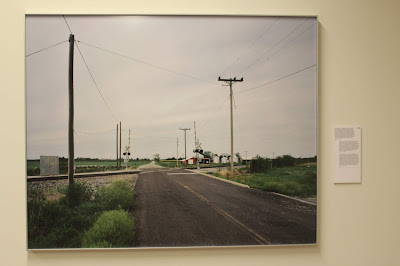When photographer Mathieu Asselin heard about Monsanto's practices through his father 8 years ago, it did not let him go. When doing further research on the subject he discovered an enormous story full of ramifications and a mafia-like way of doing business that affected thousands of people and communities around the world.For Asselin it was no longer the question whether he should do something with Monsanto, but rather how he could best tell the story. He combined his photography with archival material, video and text to make an came to an astonishing narration, interesting and coherent with different layers.
Monsanto
For more than 75 years, Monsanto has been one of the biggest producers of food, animal food, seeds and chemical products. Monsanto’s history is characterized by countless scandals. It certainly is a controversial company, known, among other things, as producer of the defoliation agent Agent Orange, which was deployed by the American army in the Vietnam War. Today, Monsanto is the global market leader for genetically modified seeds and herbicides. Although the company has had the public opinion against it for years, its power seems unaffected.
A stark contrast
When Asselin heard about Monsanto’s practices he started investigating the company. He discovered the work of activists, researchers, farmers and especially the work of journalist and documentary filmmaker Marie-Monique Robin. Asselin decided tot investigate and decided to give space to archival material, video and text next to his photography. Making an interesting narration with different layers. Asselin photographed dumpsites in the United States, portrayed Vietnamese victims of Agent Orange and exposed lobbying practices. His photos are in stark contrast to the positive, almost utopian performance that Monsanto is spreading of his chemical products. By showing photographs, advertisements, news items, personal letters, court files and many other sources he created a nuanced and clear picture of the history of the company, hoping to get an idea of what we can expect in the future.
Monsanto®: A Photographic Investigation is an impressive indictment against the multinational biotechnology company and can be seen as a cautionary story that draws attention to the consequences of impunity for both people and the environment. Monsanto®: A Photographic Investigation was awarded the Aperture First PhotoBook Award last year at Paris Photo and has been nominated for the prestigious Deutsche Börse Photography Prize 2018.
Mathieu Asselin
Mathieu AsselinAsselin (1973) started his career in Caracas, Venezuela, where he started with film productions in Caracas. He has refined his documentary photograpy style in the United States. His work can be seen in Foam, Liberation, Paris Match, The New Yorker Photobooth, GEO Freitag and he exhibited in France, New York, Miami, Washington and Caracas.
“Monsanto is a very large story, it has and continues to affect thousands of peoples in many different ways around the world: health, economically and of course ecosystems (air, water and soil). Each of these stories has their own drama, no one is more important than anyone else, they are all equal at a personal level.” (American Suburb X)
Lewis Bush MONSANTO: A PHOTOGRAPHIC INVESTIGATION
29 JUL 2016
I am an avid maker and viewer of photo books, but gradually I have come to think that this two word term can be as much of a shackle on interesting work as it is a useful genre distinction. The best photo books are not really photo books at all. They are just books, which might predominantly contain photography and which might employ and manipulate it in ways which have the nuance and subtlety you would expect from the photography world, but which avoid letting this nuance define them. They are books which, rather than becoming bogged down in design fads and trends, or in self-referential and irrelevant ponderings about the specificities of photography, have something that they urgently need to say about the world, and which they need to say to as wide an audience of possible.
In all the many books I view each year, I encounter relatively few which really seem to do this, and particularly at the Rencontres d’Arles Festival where there was a staggering number of books on display I discovered only a handful amongst the works shortlisted for the various prizes which spoke to me in this way. One of these few titles was Mathieu Asselin’s Monsanto: A Photographic Investigation, which received the honourable mention in the festival’s LUMA dummy book award. In it Asselin uses photography as an investigative tool to probe and reveal the consequences of the practices and products of the multinational agrochemical corporation Monsanto in Vietnam and it’s home country of the United States. These activities are immensely broad, but those documented in the book share the common trait that they have had severe long term consequences for the communities where Monsanto’s products have been developed or deployed.
M-A-I_Mathieu_Asselin_
In some respects Asselin is revisiting depressingly familiar territory. He looks for example at the company’s manufacturing of the toxic defoliant Agent Orange during the Vietnam War, considering the well-known consequences for Vietnamese today through a series of gruelling images of Vietnamese people with severe physical and mental defects caused by dioxin poisoning. What makes this book distinct though is the way he connects threads and links issues which other photographers might have treated in isolation. For example alongside these images from Vietnam he considers how United States servicemen exposed to the chemicals have also subsequently had children with birth defects likely to have been caused by the chemical, as in two striking images of Helen Bowser, the daughter of a former serviceman. In one striking image Bowser’s hand holds a photograph of her father in military uniform, only after a moment do you notice the misshapen fingers which clutch the print.
In another sequence of the book Asselin examines Monsanto’s contemporary diversification and development of genetically engineered crops, designed to resist herbicidal chemicals like the corporation’s Roundup weed killer. Asselin highlights the way the company treats these engineered crops as a patented product, forcing farmers to purchase seeds each year rather than resowing from the seeds of a previous crop, and litigating against those who don’t, a policy which has led to a spate of cases and bankruptcies. As Asselin pointed out when I met him in Arles, this idea of seed crops as corporate property is an entirely new and frightening development, which takes ownership away from the farmers for the first time in history.
M-A-I_Mathieu_Asselin_
Another important component of the book is the reproduction of material from some of Monsanto’s own advertising campaigns, which arrayed alongside Asselin’s documentation of the fallout of their activities creates a jarring contrast between the corporation’s own projected self-image and the realities of its activities for the communities it operates within. Perhaps the most potent example of this is the Monsanto House of the Future, a Disneyland attraction sponsored by the corporation and which opened in 1957. ‘Tomorrow is always built on today’ a video advertising the house prophetically announces, but in this book this house of the future becomes a sort of dark metaphor for a future which corporations focused on short term profits actually care very little about.
Asselin’s photographs become a sort of testament to what happens when the well-being of the future is traded for profit in the present, and specifically the consequences for those people who have to occupy that future, who are inevitably often the poor and the marginalised, the last people in other words who might own stocks in a company like Monsanto. So many images in this book stand for this idea, but one in particular lingers on my mind. Taken in West Anniston, Alabama, formerly the site of a major Monsanto plant, the photograph shows 65 year old David Baker at the grave of his brother, who died at the age of 16 from cancers caused by PCB exposure. Baker was a leading figure in the campaign which ultimately led to Monsanto being fined $700 million for polluting the town. It is a powerful, shocking image of past, present, and a future denied.
M-A-I_Mathieu_Asselin_
As I’ve said, many photographers would have documented just one of these issues in isolation, particularly the devastating long term consequences of dioxin poisoning in Vietnam, famously recorded Phillip Jones Griffiths in his book Agent Orange: Collateral Damage in Vietnam. What is rare though is to see a photographer making the connection between these different activities and using them to develop a sustained and highly persuasive argument against a company’s activities, and by connection against this sort of aggressive corporate activity in general. This type of interlinking seems to be me to be an ever more essential strategy for documentary photographers in a world which is so interlinked, globalised and networked, yet relatively few yet employ it perhaps because such an approach runs so counter to the way we tend to think about photographs. In that sense, and in terms also of the sense of indignation which seems to boil below the surface of the book, Monsanto: A Photographic Investigation calls to mind Griffith’s seminal anti-war book Vietnam Inc. as a work which transcends simply being a photo book to become a powerful investigative polemic on a topic which affects us all.


























































Geen opmerkingen:
Een reactie posten